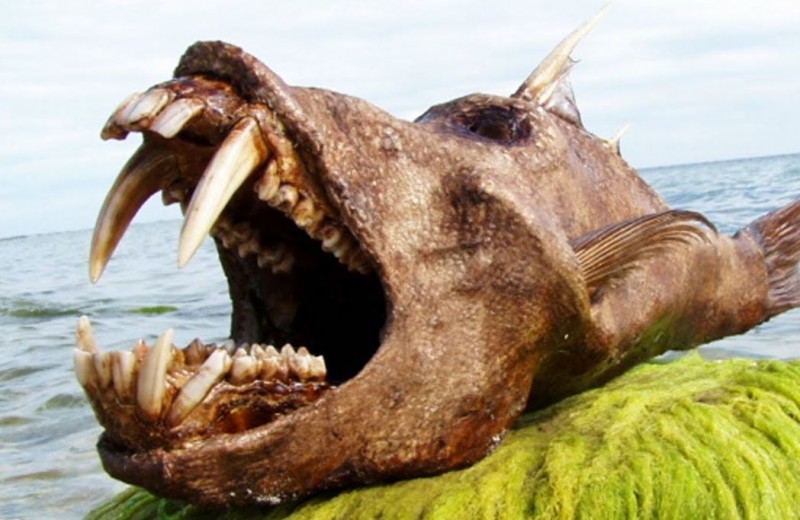
Deep beneath the surface of the vast oceans, a world of wonder and mystery awaits. The deep sea is a realm of darkness and extreme conditions, hosting an incredible diversity of life that remains largely unexplored. In this article, we will delve into the depths of the ocean and uncover the secrets of deep-sea creatures and ecosystems. Join us on this thrilling journey as we unravel the enigmatic world of the deep sea.
1. Introduction: The Enigma of the Deep Sea
The deep sea, also known as the abyssal zone, is the vast, remote area of the ocean that extends below the sunlit surface down to the ocean floor. It encompasses a significant portion of our planet, yet its mysteries have remained largely hidden from us. With crushing pressures, frigid temperatures, and scarce resources, the deep sea presents a challenging environment for life to thrive.
2. Exploring the Abyss: Life at Extreme Depths
The exploration of the deep sea is an arduous task due to the immense pressures and technological limitations. However, with advancements in deep-sea submersibles and remotely operated vehicles (ROVs), scientists have been able to glimpse into this mysterious world. They have discovered a plethora of awe-inspiring creatures, some of which appear straight out of science fiction.
3. Adaptations for Survival: Unique Features of Deep-Sea Creatures
Deep-sea creatures have evolved remarkable adaptations to survive in the harsh conditions of their habitat. Many species exhibit gigantism or dwarfism, as size becomes an advantage or disadvantage in the deep sea. Bioluminescence, transparent bodies, and elongated appendages are just a few examples of the extraordinary adaptations that help these organisms navigate the darkness and capture prey.
4. The Deep-Sea Ecosystem: Interconnections and Biodiversity
The deep-sea ecosystem is a complex web of interconnections, where each organism plays a vital role. From filter-feeding organisms that extract nutrients from the water column to scavengers that rely on the organic matter that sinks from above, every species contributes to the delicate balance of the deep-sea ecosystem. The biodiversity found in these depths is astonishing, with new species being discovered on each expedition.
5. Unveiling the Deep-Sea Food Web
The deep-sea food web operates on a unique set of principles. Unlike the sunlit surface waters, where photosynthesis forms the basis of the food chain, the deep sea relies on detritus, marine snow, and chemosynthesis to sustain life. Microorganisms and chemosynthetic bacteria provide energy and nutrients to support the complex food web that sustains deep-sea creatures.
6. The Role of Hydrothermal Vents: Pioneers of Life
One of the most fascinating discoveries in the deep sea is the presence of hydrothermal vents. These underwater geysers spew forth hot, mineral-rich fluids, creating a unique ecosystem teeming with life. Organisms around these vents rely on chemosynthesis, using the energy from chemical reactions to produce organic matter. Studying hydrothermal vents offers insights into the origins of life on Earth and the potential for life on other planets.
7. Bioluminescence: Illuminating the Depths
Bioluminescence is a captivating phenomenon observed in many deep-sea creatures. It is the ability to produce light through a chemical reaction within the organism's body. Bioluminescence serves a variety of functions, from attracting prey and mates to camouflage and communication. The deep sea is a spectacle of glowing organisms, lighting up the darkness with their enchanting bioluminescent displays.
8. Deep-Sea Research: Unraveling the Unknown
Scientists and researchers are continually pushing the boundaries of deep-sea exploration. They employ sophisticated technology and innovative research methods to study the depths and shed light on the mysteries that lie within. From deep-sea cameras to DNA analysis, these tools enable scientists to gain a deeper understanding of the complex ecosystems and the adaptations of deep-sea organisms.
9. Conservation Challenges: Protecting Deep-Sea Environments
As human activities extend further into the ocean, the deep sea faces new threats. Deep-sea mining, bottom trawling, and climate change pose significant risks to these fragile ecosystems. It is crucial to implement sustainable practices and protect deep-sea environments to preserve the delicate balance of life and maintain the wonders of the deep sea for future generations.
10. Conclusion
The deep sea holds a wealth of secrets that are slowly being revealed through scientific exploration. Its mysterious creatures, unique ecosystems, and mesmerizing adaptations captivate our imagination and deepen our understanding of life on Earth. As we continue to unravel the mysteries of the deep sea, let us also strive to protect and conserve these fragile environments for the benefit of both marine life and humanity.
Dramatic Chase Ends in Arrest: Lokayukta Police Nabs Corrupt Food Inspector in Bengaluru